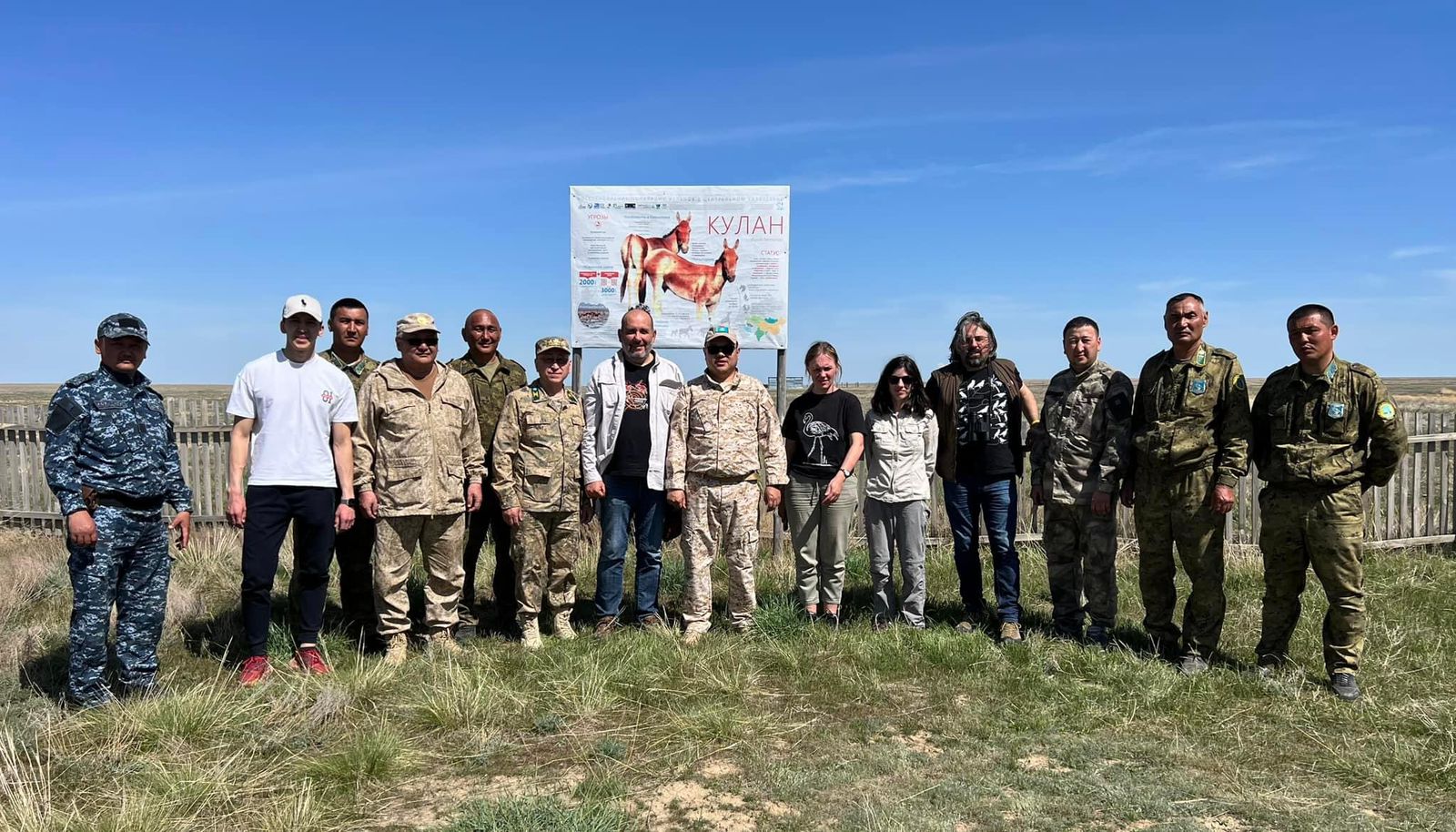ASTANA – Przewalski’s horses, the last truly wild horses on the planet, could return to the Kazakh steppe once again after a memorandum of cooperation was signed between the Forestry and Wildlife Committee of the Kazakh Ministry of Ecology, Geology, and Natural Resources and the Prague Zoo during the Kazakh-Czech business forum on April 24, reported the committee’s press service.

Sandy-red, tough, and with a willful temperament, Przewalski’s horses are considered the last truly wild horses on the planet. Photo credit: mir24.tv
Altyn-Emel and Kolsai Kolderi national parks and Altyn Dala state nature reserve were identified as potential areas for the reintroduction of the horses during a preliminary study last December.
The director of Prague Zoo Miroslav Bobek, during his recent five-day trip to Kazakhstan, has deemed Altyn Dala area to be more suitable for the reintroduction of horses compared to Altyn Emel.
“It [Altyn Emel] has a lack of suitable vegetation and an overall low nutritional value, a completely insufficient area for a viable population (it is a strip enclosed by mountains and the Ili River), not a quite optimal terrain profile, and domestic horses roam nearby. The main advantages are mild winters and very good accessibility,” wrote Bobek on Facebook.
“In contrast, the Altyn Dala region thrilled us. Although it is difficult to access, it is a huge area of fertile steppe without domestic animals, with enough water and a suitable terrain profile,” added Bobek.
According to him, although many issues must be addressed, Altyn Dala appears to be a promising location for the return of Przewalski’s horses to Kazakhstan. “And that return could happen much sooner than we thought,” said Bobek.

Miroslav Bobek with the representatives of national parks during his visit to Kazakhstan. Photo credit: Miroslav Bobek Facebook
Przewalski’s horses, named after a Russian officer and explorer who spotted them around the 1880s, once roamed the territory of over 5,000-year-old Botai culture in North Kazakhstan and surrounding territories of Mongolia and China.
Sandy-red, tough, and with a willful temperament, the average Przewalski’s horse is 200 centimeters long and weighs 250-300 kilograms. The last Przewalski’s horse in the wild disappeared in 1969.
Luckily, a dozen horses survived in zoos and nature reserves. Przewalski’s horse would have been extinct without reintroduction programs and zoo-based conservation. All animals living today are descendants of just 12 wild-caught horses.
“Due to inbreeding, it was extremely difficult to reproduce them,” said Rustam Khabibrakhmanov, head of the science, information, and monitoring department of the Altyn-Emel national park in an interview with Mir24 Interstate Broadcasting Company.
“Cases of stillbirths, abnormal development and deformities, curved legs, ‘open mouths,’ and hereditary diseases were not uncommon. Nevertheless, zoologists in different countries did not stop trying to breed horses. Experimental work was carried out in China, Mongolia, and Uzbekistan, while Ukrainian specialists released several animals into the Chernobyl exclusion zone,” he said.
The area of Altyn Emel was already home to several Przewalski’s horses. The first group of four stallions and four mares brought from Munich Zoo in Germany was released in the national park in 2003.
The natural barriers of the national park bounded by the Dzhungar Alatau mountains to the north and the Ili River and the Kapshagai Reservoir to the south enabled close monitoring of the horses and their accustomization to the wild.
“But they were all zoo animals, their immunity was weakened, and our sharply continental climate was very different from the humid climate of Germany. As a result, three mares died of piroplasmosis, two more died of an accident, and one horse escaped to the kulans (wild ass). Two specimens and three foals survived, but they were all male, so we considered bringing another group of horses,” said Khabibrakhmanov about the results of the first stage of the reintroduction program.
The second group of Przewalski’s horses arrived at Altyn Emel in 2008, but not all survived the adaptation period for various reasons.
Many lessons have been learned, and it is hoped the species will eventually live and adapt to the conditions in the national reserve following the cooperation with the Prague Zoo, a leading European institution charged with the preservation of this specific type of animal.
The Prague Zoo has a very successful history of reintroducing Przewalski’s horses in Mongolia in the past few decades.

